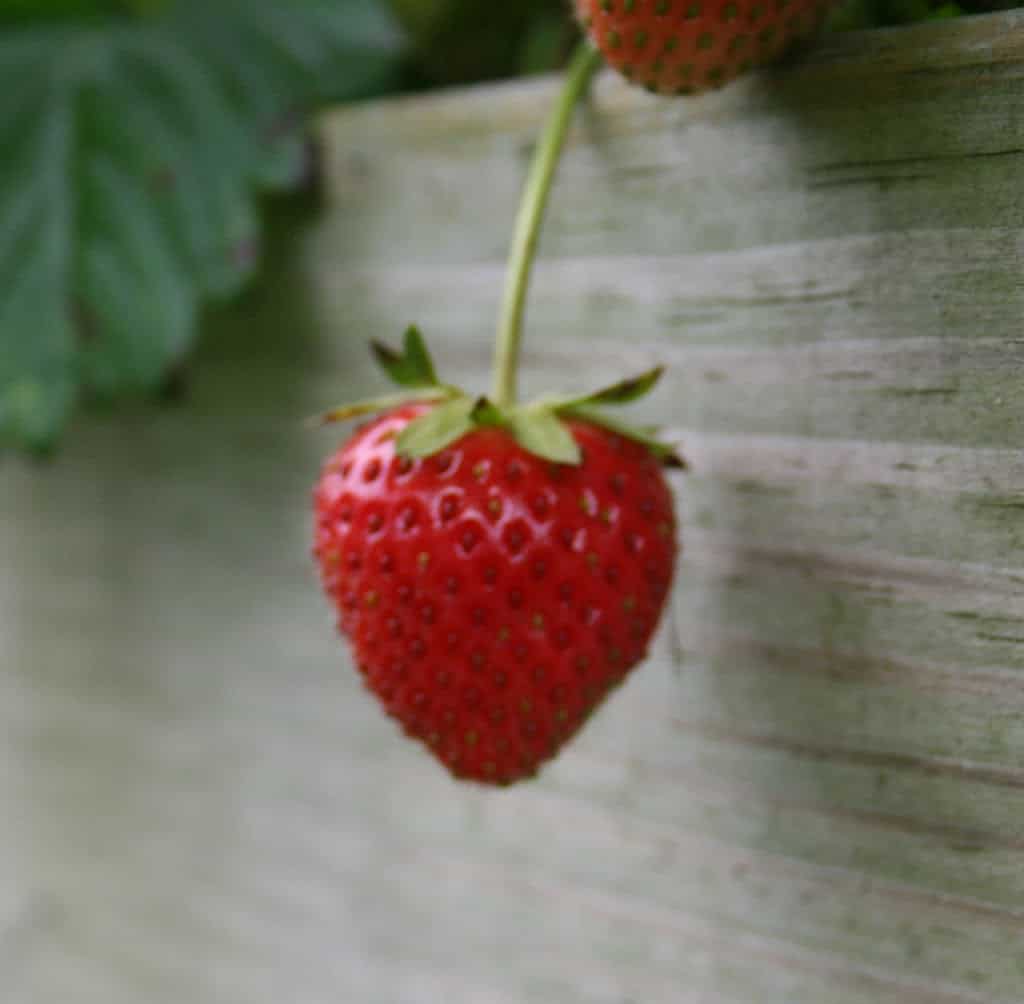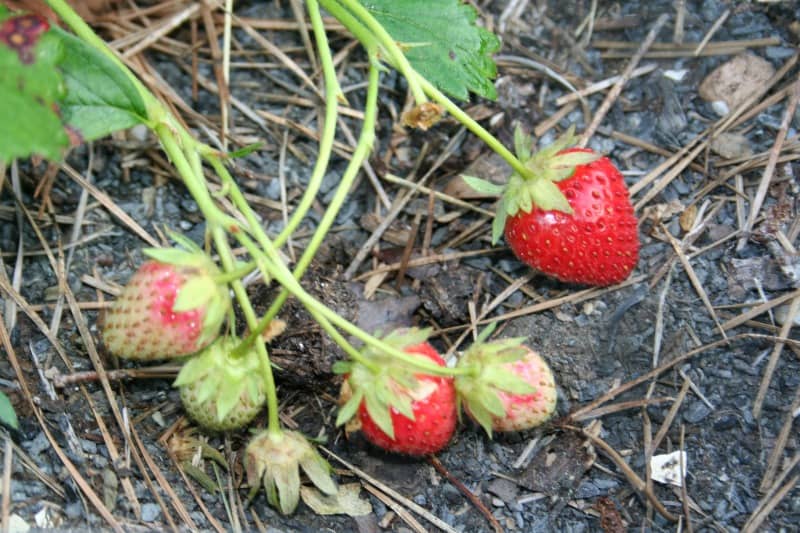Growing strawberry plants is one of my favorite gardening adventures. Once they get growing, strawberry plants produce abundant strawberry fruit. Outwit the birds, and you’ve got your own personal fruit supply for several weeks, or you can make a strawberry jam recipe that tastes like a burst of summer.

Growing Strawberry Plants
To grow healthy strawberry plants that produce abundant strawberry fruits, you’ll need to understand the plants and their life cycles. As with all plants, once you understand a little about how they grow, you’ll understand what they need in order to thrive. Happy, healthy strawberry plants produce abundant fruit – which is great for you and for your garden.
Plant Profile: Strawberries
- Full sunlight: 8 hours a day or more
- Rich, well drained soil with a pH of 5.8 – 6.2
- Plenty of compost in the soil
- Likes slightly moist soil, so be prepared to water them
- Mulch in late fall to prevent cold damage
- Remove the mulch in the early spring
- Leave space between plants for runners to produce daughter plants and increase your patch
How to Grow Strawberries
Plant strawberry crowns or starter plants in early spring. Although you can see seeds in the berries themselves, they aren’t typically grown from seeds. Strawberry crowns are typically sold in boxes during winter and early spring at most home and garden stores.
Planting Strawberry Crowns
To plant strawberry crowns, plant the crown in a shallow hole with the top portion sticking out. Do not plant them too deeply or they will rot.
An easier method of growing strawberries is to wait just a little bit longer until the plants arrived in the garden centers. I buy at least six every year and set them out in the garden as soon as I buy them in April.
Strawberry Life Cycle
Strawberries begin waking up as soon as soil temperatures reach around 50 degrees. Once they grow, they produce flowers, which after pollination become a strawberry. It takes only a few days for a strawberry to ripen fully; they do not ripen after picking, so don’t pick them white and hope they ripen to red later on.
After bearing fruit, strawberries send forth long stems called runners. Along the runner and at the tip, a new plant forms. The daughter plant at the end of the runner sets down roots and grows into a new plant, increasing your strawberry patch.

Care of Strawberry Plants
Strawberries require full sunlight and rich, loamy soil. Add plenty of compost to the soil before planting. I top dress my patch with extra compost and mushroom soil, a by product of the mushroom growing industry sold as compost, in early spring after I remove the mulch.
Mulching strawberries before winter sets in is very important. Pine straw, the brown needles that fall from pine trees, is the easiest and in my case free method of mulch available. I live on a pine tree farm so I just rake it up from the edge of the woods and spread it over my strawberry patch in the late fall before the first hard frost. The mulch keeps the strawberry plants from heaving, or pushing out of the ground.
Types of Strawberries
Strawberries come in several different types. The June-bearing varieties are as the name suggests plants that bear in mid to late spring – June in some parts of the country, May where I live in Virginia. The June bearing plants provide the large strawberries you see in the stores although home-grown ones rarely attain the same enormous sizes found in supermarkets.
Everbearing strawberries produce one big crop in spring and a second crop in the fall. The berries taste just as sweet, but they tend to be smaller than the June bearing kinds. There are also Alpine strawberries, which are the smallest, and wild strawberries.
For a full list of strawberry varieties, visit this guide to strawberries.
Growing Strawberry Plants: More Resources
I’ve been growing strawberry plants for over 10 years now and love every minute of it. I now make homemade strawberry jam , a treat my family looks forward to each year.
Strawberry Gardening Resources
Here are more articles I’ve written on Home Garden Joy about growing strawberry plants:
- Tucking Strawberry Plants in for the Winter
- How to Grow Strawberries
- Growing Strawberries Using Organic Gardening Techniques
- Keeping Birds Out of the Garden – Use of Bird Nets
Strawberry Recipes
Fruit in the Same Plant Family
This post was originally written in June 2018 and updated on May 31, 2022 with new content, new images, and better information.





[…] Growing Strawberry Plants […]